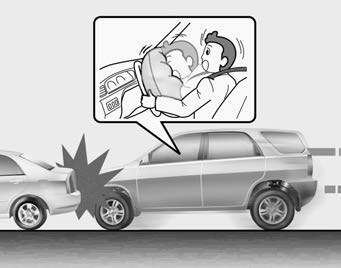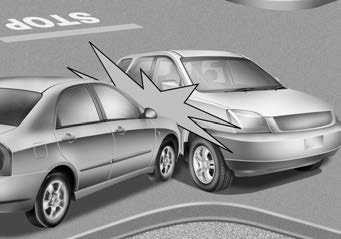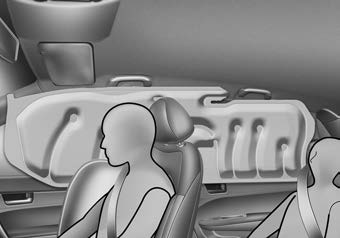 Kia Sportage: Air bag inflation conditions
Kia Sportage: Air bag inflation conditions

Front air bags
Front air bags are designed to inflate in a frontal collision depending on the intensity, speed or angles of impact of the front collision.


Side impact and/or curtain air bags
Side impact and/or curtain air bags are designed to inflate when an impact is detected by side collision sensors depending on the strength, speed or angles of impact resulting from a side impact collision.
Also, the side impact and curtain air bags are designed to inflate when a rollover is detected by a rollover sensor.
Although the front air bags (driverŌĆÖs and front passengerŌĆÖs air bags) are designed to inflate only in frontal collisions, they also may inflate in other types of collisions if the front impact sensors detect a sufficient impact. Side impact and curtain air bags are designed to inflate only in side impact collisions or rollovers. But they may inflate in other type of collisions or similar rollover situations, including when the vehicle is tilted such as being towed if the side impact sensors or rollover sensor detect a sufficient impact or rollover.
If the vehicle chassis is impacted by bumps or objects on unimproved roads, the air bags may deploy. Drive carefully on unimproved roads or on surfaces not designed for vehicle traffic to prevent unintended air bag deployment.
 Air bag collision sensors
Air bag collision sensors
(1) SRS control module/ Rollover sensor
(2) Front impact sensor
(3) Side impact sensor
(4) Side impact sensor
WARNING - Air bag sensors
Do not hit or allow any objects to impact the loca ...
 Air bag non-inflation conditions
Air bag non-inflation conditions
ŌĆó In certain low-speed collisions the air bags may not deploy. The air bags are
designed not to deploy in such cases because they may not provide benefits beyond
the protection of the seat bel ...
Other Information:
Propeller Shaft: Components and Components Location
Components
1. Front propeller shaft2. Center bearing bracket3. Rear propeller shaft
...
Troubleshooting
Troubleshooting
Problem Symptoms Table
Use the table below to help you find the cause of the
problem. The numbers indicate the priority of the like cause of the
problem. Check each part in o ...
Categories
- Home
- Kia Sportage QL (2015-2019) Owners Manual
- Kia Sportage QL (2015-2019) Service Manual
- Kia Sportage SL 2010-2016 Owners Manual
- Kia Sportage SL 2010-2016 Service Manual
